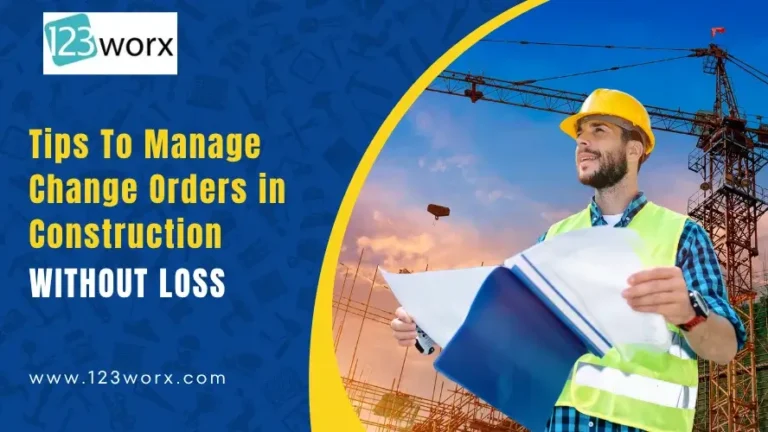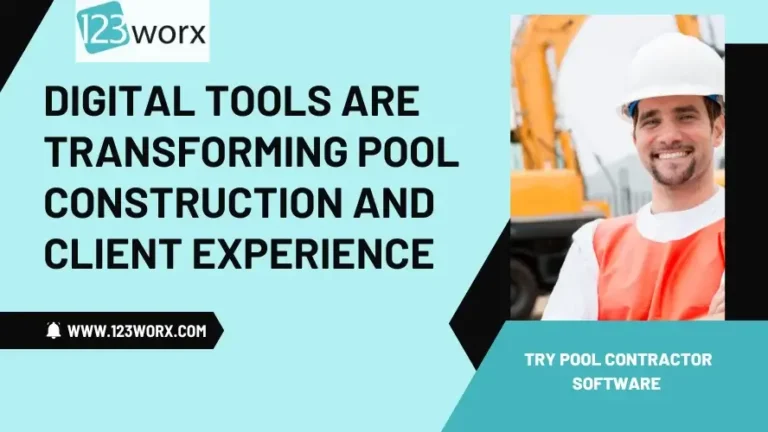The construction sector is about to experience an unprecedented transformation. By 2025, paperless construction firms will no longer be progressive firms; they will be firms that conduct business through industry-standard practices. As the construction industry moves forward, it is rapidly giving up paper-based methods in favor of more efficient, more effective, and more streamlined digital-first systems powered by modern construction management software.
Imagine construction projects without piles of paperwork, misplaced agreements, or old specifications. Instead, every document lives securely online, accessible from any location, constantly updated, and protected from damage. Work teams collaborate immediately, expenses go down, and the negative impact on the environment is significantly lessened.
From BIM to AI-powered project handling, digital systems are boosting efficiency, clarity, and precision. This is not just a fad, it’s the bedrock of construction’s future.
Therefore, 2025 will see the widespread adoption of paperless construction, and here are 10 reasons why you should take note!
Why 2025 is the Tipping Point for Paperless Construction?
There are three forces aligning that will make 2025 the tipping point of paperless construction:
- Technological advancements – Affordable, dependable, and adaptable cloud platforms, BIM systems, and AI-driven solutions are available for businesses of all sizes.
- Market demands – Clients are increasingly requiring real-time information, quicker project completion, and verifiable evidence of sustainable practices.
- Regulatory developments- Governments are increasing environmental standards and promoting digital compliance tracking.
Combining all these elements means that processes relying on paper will become a disadvantage, slowing down projects, increasing expenses, and harming a company’s reputation. According to a well-cited McKinsey study, inefficiencies in traditional construction processes already cost the industry billions annually, making digital transformation no longer optional but essential.
On the other hand, companies that adopt paperless workflows will not only fulfill those needs, but they will also be seen as leaders in new ideas. By the year 2025, construction companies will have a clear decision to make: go digital or be left behind.
Top 10 Reasons Paperless Construction Will Dominate by 2025
1. Faster Decision-Making with Digital Construction Workflows
In construction projects, delays are costly both financially and in terms of standing. Using paperless systems guarantees that those in charge always have the most current data readily available. Rather than waiting for reports to be printed, approved, and shared, project team members can see live data from any location.
This quicker access leads to faster approvals, immediate integration of any design modifications, and quicker handling of any on-site problems before they escalate. When architects, contractors, and all other team members are looking at the same live documents, communication breakdowns are fewer, and output is better.
Digital workplaces provide instant alerts, preventing accumulation in inboxes or prolonged delays on desktops. By 2025, this instant, timely decision-making will distinguish companies striving to excel in a fast-paced, profit-driven economy.
2. How Paperless Construction Reduces Costs in 2025
Eliminating paper for blueprints, sending documents through email, and storing physical records in warehouses involves high costs. Going digital helps businesses get rid of these costs completely. Still, the savings don’t end there.
Digital project management systems minimize administration costs through automated scheduling, task management, and reporting. They also assist in preventing costly mistakes and rework through working from one up-to-date version of a plan.
Moving to the cloud saves space and money. Numerous physical documents can be replaced with safe, online storage, which costs far less. Over a year, these gains lead to considerable savings on larger projects, potentially reaching tens or hundreds of thousands of dollars.
For businesses with small profits, going paperless in construction is about more than just helping the environment. It protects profits while speeding up projects.
3. Paperless Systems Improve Construction Team Collaboration
Construction projects involve a complex web of stakeholders, designers, engineers, contractors, suppliers, and clients. When communication is disorganized, errors arise.
Digital systems offer a single, reliable source for drawings, documents, and updated schedules. Stakeholders can access the platform from anywhere, view the most recent information, and comment immediately.
This approach reduces version-control issues, accelerates feedback, and unites the entire team. Regardless of their location or time zone, everyone operates with the same data, on both physical and digital versions.
4. Real-Time Project Tracking in Paperless Construction
One of the best benefits of paperless working is real-time insight into progress on projects. Cloud systems enable managers to view up-to-the-minute information about work, budget, and timing on tasks.
Instead of having obsolete paper reports, the decision-makers can now login and see right away if milestones are being achieved. This allows proactive action to resolve problems before they lead to expensive delays.
The inclusion of IoT sensors, drones, and mobile apps makes monitoring more accurate. Equipment usage, supply of materials, and attendance of workers can be monitored online, and each process is also accountable.
5. Why Digital Construction Improves Data Security
Paper records can be stolen, burned or flooded, or merely lost. Digital records, on the other hand, can be encrypted, backed up automatically, and access controlled.
Construction software enables your administrators to grant access permissions, thus only authorized individuals are able to read confidential information. Activity logs also maintain a clean audit record, enabling you to monitor who read or modified documents, and exactly where and when.
In the unlikely scenario of a cyberattack, today’s cloud solutions offer enhanced security and fast recovery alternatives, defending your information significantly better than disks or tapes, traditional storage devices.
6. Paperless Construction and Environmental Sustainability
The production of paper is heavily dependent on natural resources like trees, water, and energy. Decreasing paper usage in the day-to-day operation of the company enables construction firms to reduce their carbon footprint significantly.
Paperless construction aligns with sustainable practices on two major fronts:
- It does away with the need for printed-out plans, contracts, and reports.
- It employs accurate digital planning to reduce construction waste.
With governments and clients placing greater emphasis on green credentials, sustainability isn’t just good ethics; it’s good business. A paperless approach demonstrates commitment to environmental responsibility and can help win eco-conscious contracts. Rising global environmental standards are pushing construction firms to prove their sustainability practices, and going paperless is one of the fastest ways to align with these regulations.
7. Simplifying Compliance with Paperless Construction
There are always regulatory challenges that construction work involves. Without the right permits, outdated safety records, or incomplete inspection reports, work can be stalled and serious sanctions incurred.
Paperless systems simplify compliance with one searchable digital repository of all required documents. Permits, inspection reports, and safety certificates can be readily accessed instantly by project managers with little effort.
This automated program also gives deadline reminders, hence keeping up-to-date renewals and submissions. These systems also usually include audit trails, hence keeping entire histories of revisions of documents, available at a glance during inspection.
8. Reducing Errors with Digital-First Construction
Paper-based procedures tend to create problems with version control; one may work from an obsolete drawing or read incorrect notes on paper. These mistakes can be costly in terms of time, materials, and dollars.
With digital documentation, all the changes are immediately displayed on every device. That way, everyone works from one version and does not get confused. Detailed designs can be zoomed, marked up, and sent right away, and information is more transparent than it has been previously.
Furthermore, integrated project management software minimizes manual entries, which are prone to errors. By eliminating redundant paperwork, there’s little chance for human errors to seep in.
9. How Paperless Construction Improves Client Satisfaction
Customers today want speed and clarity. They need information on the status of their project without waiting days for someone to produce a report.
Paperless systems give clients access through an online secure portal where they can see current information, photos, and reports in real-time. They can also approve change orders right away, eliminating delay and maintaining momentum on jobs.
This openness fosters trust. Clients feel they are part of the process and are certain that the investment is being taken care of effectively. Fast communication also reduces issues before they even grow.
In an increasingly competitive market, client experience is as important as technical execution. By 2025, companies offering seamless, transparent, and paperless workflows will not only retain more clients but also win more referrals, the most valuable marketing any business can have.
10. Future-Proofing Construction Firms with Paperless Systems
The rate of technological change within construction will continue to speed up. Paperless systems are built to be interoperable with future technologies such as AI scheduling, predictive maintenance, and high-end robotics.
By introducing paperless working processes today, companies pave the way for future adoption of tools seamlessly. They also position themselves alongside updated, agile, and progressive qualities that are desired among best talents and A-list customers. On the other hand, maintaining obsolete paper systems generates integration issues down the line, requiring expensive overhauls in order to maintain competitiveness.
Competitive Advantage of Paperless Construction in 2025
In 2025, paperless construction will be more than just efficient; it will be a defining competitive advantage. Companies that digitize will work faster, communicate more effectively, and cut their risk. Those that fail to do so will look outdated and inefficient and will lose jobs to more agile builders.
Digital systems enable data-driven decision-making, prompt resolution of problems, and coordination with partners. They also relieve managers from chasing paperwork and spending more time on priorities.
When we compare bidders, paperless functionality will be reflective of professionalism, transparency, and indeed sustainability. In an industry where reputations are lost and gained on principles of trust and delivery terms, such attributes will be reminiscent of leaders in the industry.
Why Paperless Construction Is the Future of the Industry
The construction landscape of 2025 will be decidedly different from what we understand today, speedier, greener, and more interconnected. At the heart of it all is paperless construction.
The 10 compelling reasons listed here, from cost reduction and collaboration to green and future-proof, demonstrate that paperless is more than just a technological upgrade. It’s an imperative strategy. Organizations embracing it will complete projects more rapidly, more reliably, and with higher client satisfaction.
The environmental advantages alone are compelling, but together with competitive forces, regulatory requirements, and client mandates, the position becomes irrefutable. Organizations that do not change will be hindered by inefficiency, hampered by obsolete processes, and left in the dust by more progressive competition.
Now is the time to act. Going paperless is not just about keeping up with the industry; it’s about leading it. In 2025 and beyond, the most successful construction companies will be the ones who build without paper, but with vision, precision, and purpose.

As a Vice President at 123worx, Construction Management Platform, Bharat Rudra has worked with hundreds of business executives searching for best-suited software for their construction business with a wide array of requirements. Bharat takes pride in helping construction businesses solve their business and project management challenges. Feel free to reach Bharat if you have any questions. You can find him on LinkedIn or reach him at brudra@123worx.com





